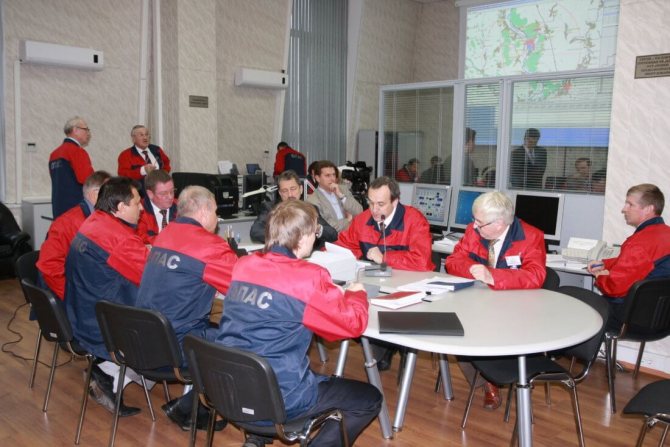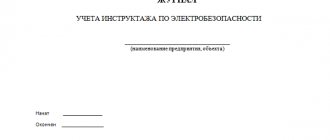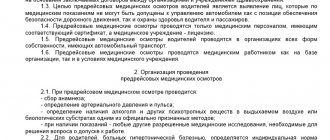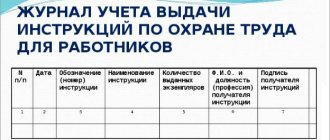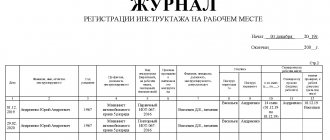Training personnel to act in case of fires is a fundamental component of acquiring knowledge and skills. Essentially, this is advanced training. The main goal of such training events is to determine how much the facility personnel know and can act in emergency situations, including fires. The results are recorded in a special emergency and fire training log (a sample can be downloaded for free at the end of the article).
Which organizations keep a log of emergency and fire drills?
Some enterprises have hazardous production areas. They require special attention, and in order for everything to be done in full compliance with the regulatory framework governing the implementation of the rules, it is necessary to maintain documentation.
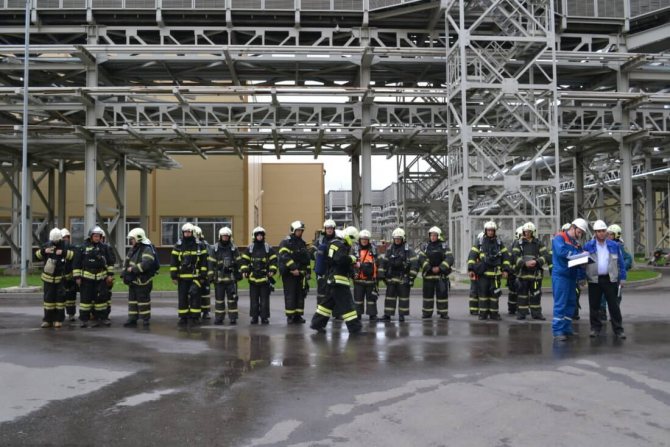
This includes keeping logs of training sessions. The requirements of Rostechnadzor and fire-fighting structures are mandatory.
Log storage
All training logs for evacuation of people in case of fire are stored in the places where the training is carried out. For example, if this is some kind of workshop, then it is kept by the head of the workshop. The general facility log is kept by the person responsible for industrial safety.
The completed journal is sent to the archive using the technology for storing any document. That is, they check the presence of all sheets, the presence of a seal at the place of the firmware and on the last sheet. Shelf life – 10 years. If it needs to be removed at the request of management or inspection bodies, then the process is carried out strictly according to the technology of removal from the archive.
Attention! There should be no corrections in the logbook for recording emergency and fire drills, a sample (typical) of which is presented. This is a gross violation. It can be corrected only by making an additional entry with explanations, the signature of the person responsible and installing the seal of the enterprise or organization.
About the filling rules
Filling out the document is carried out according to the following principle and should include:
- The date, month and year when the event was held.
- The name of the training topic, including what goals should be achieved.
- Information about event participants, including date of birth, initials in full, confidential information and position held by the employee.
- Employee signature.
- What comments are there?
- Description of the summed up results.
- Making a note about how the comments on the training were eliminated.
It is worth noting that the document must be bound and numbered, sealed with the organization’s seal, and also, upon registration, taken into account in the office work of the facility. Compliance with these conditions is mandatory, since any inspection by higher authorities may detect these deviations and at least issue comments.
Who should lead
An equally important point is who can keep the journal. For this purpose, responsible persons are appointed in the organization. The administrative document shall indicate:
- employees who have passed certification and have certificates in their hands indicating that they have acquired knowledge in the field of industrial safety;
- workers who are responsible for the hazardous area or their replacements, as a rule, are appointed responsible for maintaining the log.
Based on the results of the training sessions, a conclusion should be issued, and this can also be given by the immediate supervisor of the facility.
Who fills it out at the enterprise?
Filling out the log at the enterprise is carried out by a person who is appointed to directly supervise fire safety training.
This employee is appointed by his order.
Most often, this is an employee whose job responsibilities include maintaining fire safety at the enterprise (fire safety engineer or HR department employee).
It is important that incorrect filling out or absence of a log can have a negative impact on officials, since an administrative fine will be imposed upon inspection by regulatory organizations.
Filling procedure
There is a recommended form for the journal, which requires filling it out correctly. First of all, after acquisition or approval in the journal, you need to fill out a cover page.
It indicates the full name of the organization in which the training takes place. Then write the name of the magazine. Also on the title page is the start date of journaling and a column for the end date when the last sheet is completed.
All pages are numbered so that later interested parties do not have the opportunity to tear out or insert a sheet. There is a stamp on the last page.
After filling out, the log is sent to the archive, where it is stored in accordance with the document flow of the enterprise.
Inside the magazine is presented in the form of a table. It consists of several required columns:
- The date of the next training session or lesson.
- The topic on which the classes are held, as well as the location of the training. This can be a structural unit or a specialized training ground.
- Information about the participants, in particular: full name, position, as well as the signature of the trainee.
- Comments and individual suggestions on the topic of the training and its completion.
- A note that all suggestions have been taken into account and what has been done to eliminate errors and comments.
Then, at the bottom of the page, under all the columns there is additional information.
It indicates the training leader general information about the classes, as well as an assessment of the training sessions.
Next are the signatures of the following persons: the actual leader of the training, the mediator, if he was appointed, and the supervisory staff, if they were at the training.
The volume of the magazine is usually approximate depending on the schedule of training and fire safety classes.
If an employee who has completed the training, for some reason, refuses to sign the training box. Then a special act must be left.
It indicates the reason and must include signatures from witnesses who confirm the fact of refusal.
A typical example of a logbook and registration of fire safety training -
Sample of filling out the journal
Filling example:
| Date the event took place | Where was the training held? | Who participated in the event | What comments and suggestions were there? | Notes on which proposals have been implemented and which comments have been eliminated | ||
| Full last name and initials of the employee | Position held | Personal signature | ||||
| 18.05.2012 | Building 5. Boiler house building | Nikiforov Sergey Timofeevich | Boiler equipment repairman | signature | The valve did not work | Disconnect sequentially, without haste |
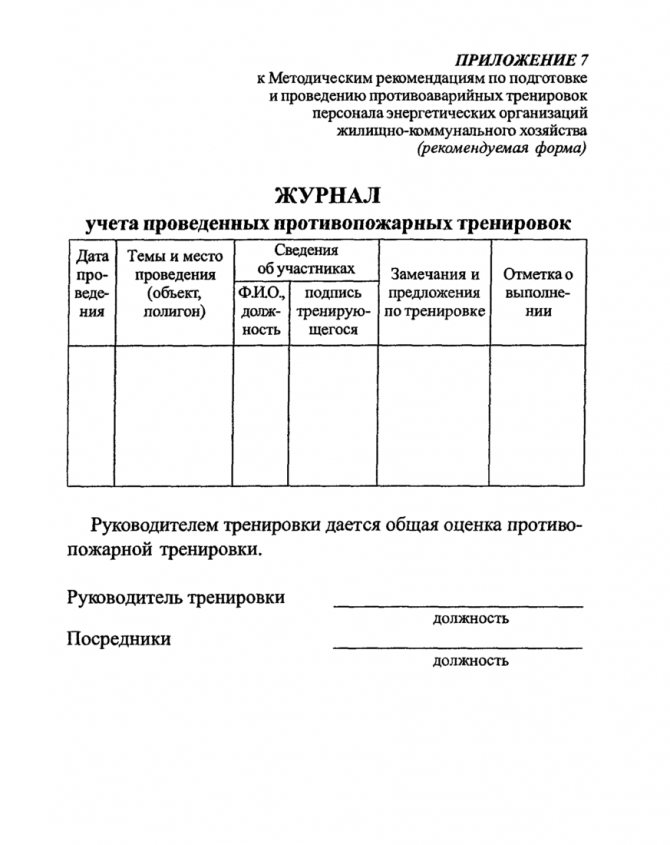
It is important to know that the personnel have demonstrated their knowledge and skills, and also acquired practical skills. This is the main goal of the event.
How to fill out
The fire drill log does not have a standard form. But fire safety experts give some recommendations that will help you avoid making mistakes when filling out.
So, on the title page it should be written in capital letters: “Journal of emergency and fire safety training.” The name of the object or its subdivision is also indicated here, as well as two dates: the beginning and end of maintenance.
Now about how to draw up internal forms. The first column is the date when the training process is carried out. The second column is the topic of the event, as well as where it is held. For example, practicing the use of a fire extinguisher, the venue is the fire department base of your city.
Then, information about the trainees is entered into the fire-fighting training log. Namely: surname and initials, position held. Employees undergoing training are required to sign next to their name. That is, they confirm that they participated in this event.
The penultimate column in the emergency and fire training log is the most important. Here trainees are graded and errors or shortcomings are indicated. The training itself does not end there, because the comments indicated in the penultimate column must be eliminated. Therefore, the person conducting the practical training must once again explain the errors and go through repeated steps for each of them. If repeated actions show a satisfactory result, then the head of the training activities puts his signature, thereby confirming that the lessons were satisfactory. That is, the assigned tasks have been completed.

Sample of internal filling
Sometimes training leaders require repeated, individual or unscheduled knowledge tests. Therefore, another column is created in the emergency and fire training log (this will be reflected in the filling example). It indicates what topic the training will be held on, when and where, and who should attend it (the list of employees is indicated by name).
Please note that all activities reflected in the fire training log (this is clearly visible in the sample) must exactly coincide with the plan for carrying out activities of this type. The plan (program) is approved at the beginning of the year. That is, the plan contains a training schedule, which indicates when and on what topic they are conducted.
The fire safety training log (a sample of which is presented) must be laced together and each sheet is numbered. This is done so that it is not possible to tear out the sheets to correct errors and omissions. Document format – A4.
You can make it yourself, for example, by downloading it HERE, or you can buy it ready-made in the store.
Often, staff gatherings or meetings are held to discuss mistakes made. Here they discuss the identified shortcomings and indicate how they can be corrected. For this purpose, there is another column in the magazine - for organizational issues. It includes what issues were considered and who was present.

The magazine must be laced
Conducting induction training
Induction training is carried out immediately after hiring an employee. Passing process:
- An administrative document for conducting the training is issued, including the approval of the training program.
- A responsible person is appointed. This is, as a rule, an occupational safety and health specialist or another employee who has been trained and certified.
- A summary is prepared, which contains information on instructing personnel.
- A time is set.
- The classroom is equipped with the necessary equipment, technical means and visual aids.
- Based on the results of the passage, a log is filled out, where the signatures of the instructing and potential employee are affixed.
- A mark of completion is also placed on the employee’s personal card, which is then stored in the personal file.
Conducting induction training is a mandatory event determined by the regulatory framework. Without it, an employee cannot be allowed to work.
Initial briefing
Conducting initial training is an important aspect of safety.
How it is carried out in practice:
- The administrative document appoints the person responsible for the conduct. These are the managers of individual objects or sections. It is important that these workers have appropriate certification and that the period specified in the certificates is not expired.
- Before coming directly to the workplace, you must listen to the instructions.
- Based on the results of the conversation, the information is entered into a special briefing log and into a personal card, after which the signatures of the instructing employee and the newly arrived employee are affixed.
- Based on the results of the interview, it is necessary to conduct a survey about how the material was learned.
- After the activities have been completed, the employee can be assigned to a trainee to master the job.
Conducting ongoing training
The employee has received permission to work and is working at his workplace. It is important for him to fulfill plans and assignments from management. Therefore, safety requirements may be a little forgotten. For this purpose, repeated or ongoing briefings are provided.

Their main purpose is to remind the employee of the knowledge acquired during the first instruction of the employee. Industrial safety is an inseparable part of the technological process. If an employee forgets to protect himself from hazards, the likelihood of injury increases.
To do this, it is necessary to develop a training program. In the program, indicate all topics and the time for which they are taught. After the conversation, you must make a note about the event in a special journal. This will indicate passage.
Current instruction is regulated by GOST requirements.
conclusions
Fire safety is given great importance. It is not enough to have fire extinguishers and an evacuation plan at the enterprise. Every employee should be able to use this.
At the same time, it is important to understand that in an emergency situation only knowledge that has been developed to the point of complete automation is used.
Training on actions during a fire should be carried out regularly and recorded in a special log.
The document is drawn up in accordance with all document flow rules and is stored in the archive for several years after completion.
Unscheduled
The very name “unscheduled” suggests that unscheduled instruction is required, but there are a number of reasons for this.
These include:
- if the rules and requirements from the occupational safety instructions have changed;
- when an accident or emergency occurred;
- in the event of an incident or accident;
- when replacing technological equipment or upgrading it;
- when changing the technological cycle;
- and others.
Conducting this type of training is important because working conditions have changed, and the employee is not yet familiar with them. Information about the event must be reflected in the journal. This will confirm the fact of the event. Signatures and dates are required.
Purpose
The main purpose of the log is to record the frequency of fire safety training. In addition, the log is needed to test the knowledge and ability of employees to evacuate and make decisions in the event of an emergency.
Regular fire safety training helps to develop clear techniques for employee behavior during a fire, and to practice these actions until they become automatic. Upon the fact of their implementation, an act is drawn up.
Personnel must act coherently, clearly know where to move in case of fire, where the fire extinguisher and fire extinguishing equipment are located, where the emergency button is located and clearly remember the evacuation plan.
There is no need to neglect training, because the better employees know and have practiced their actions in case of a fire, the greater the chance of minimizing losses among employees during a real emergency.
The training also allows staff to be trained in the ability to work with fire-fighting equipment and personal protective equipment. Employees are trained not only in fire fighting methods, but also in measures to counteract its occurrence.
In what cases is targeted training required?
If an employee works on a site, then he is given instructions in the area of his activity. But if an employee is sent to perform a different task, then a separate interview regarding his work must be conducted with him. These works can be one-time, or can be planned for a long period.
